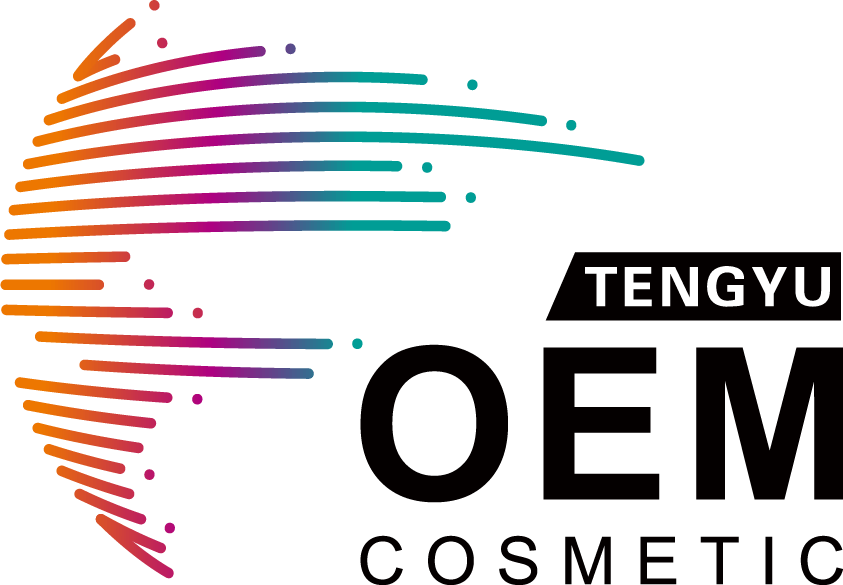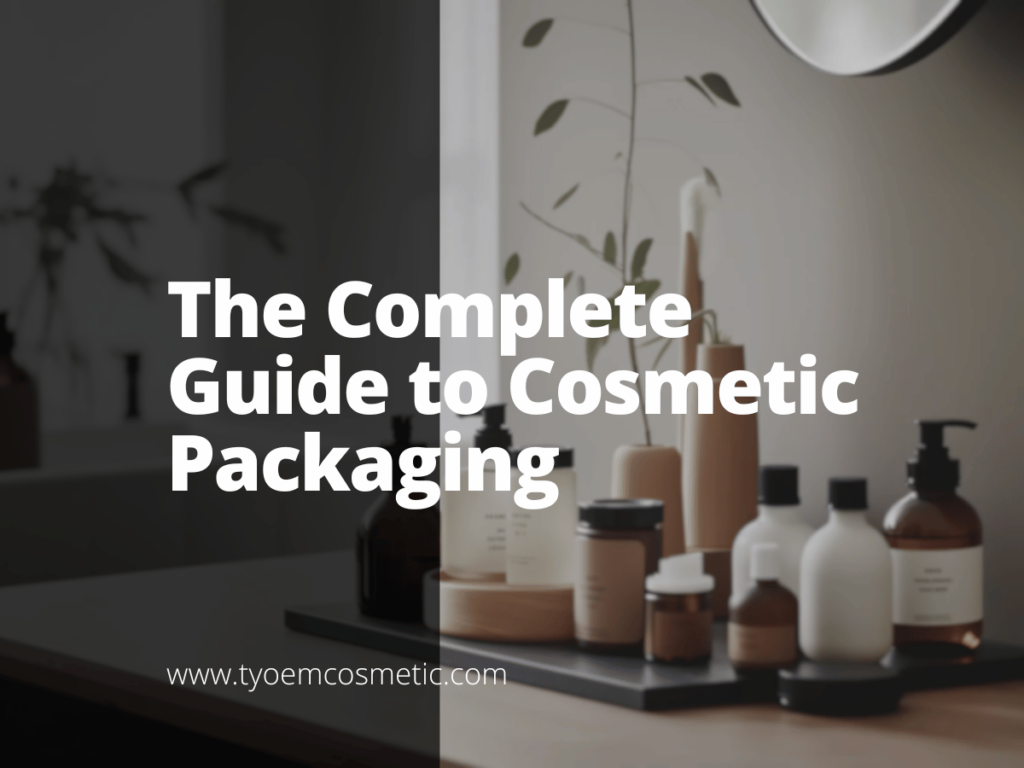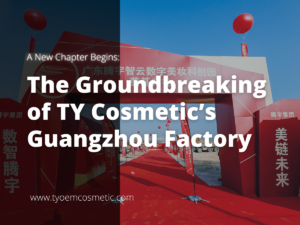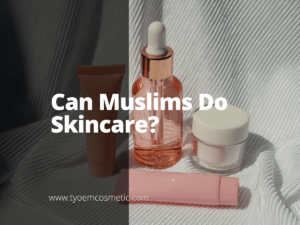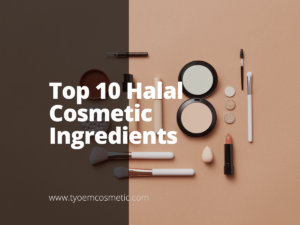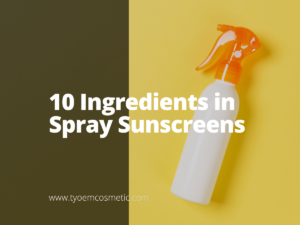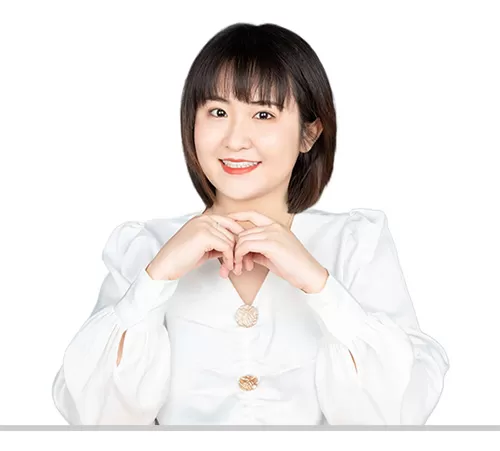Have you ever thought about how much impact cosmetic packaging has on your brand’s success and appeal? In today’s market, cosmetic packaging is an important aspect of product presentation and brand identity.
As an expert in the cosmetics industry, I bring a wealth of knowledge and insight into the evolving world of cosmetic packaging.
Cosmetic packaging serves a dual purpose: it acts as both a protective container for the product and a medium for brand storytelling.
In this comprehensive guide, we will delve into the latest trends in cosmetic packaging, explore innovative design strategies, and discuss the importance of sustainability in packaging choices.
So read on.
1. Brief Overview of Cosmetic Packaging
Cosmetic packaging is not just a functional aspect of product presentation; it’s an integral part of the branding and marketing strategy in the cosmetics industry. This packaging serves as the first point of physical interaction between the product and the client, making its design and functionality crucial.
The primary role of cosmetic packaging is to protect the product from damage, contamination, and degradation. This includes safeguarding against environmental factors like air, light, and temperature, which can significantly affect the product’s quality and shelf life. Moreover, cosmetic packaging is a powerful marketing tool.
It communicates the brand’s identity, values, and target market. The design, color, texture, and shape of the packaging can attract specific demographics and convey luxury or affordability.
2. Types of Cosmetic Packaging
Cosmetic packaging comes in various forms, each designed to cater to different product types and consumer preferences. Here are the common types of packaging used in the cosmetics industry today:
Tubes
Tubes are a popular choice for packaging a wide range of cosmetic products, from skincare creams to toothpaste. They are convenient, easy to use, and allow for controlled dispensing of the product. Tubes are also lightweight and portable, making them ideal for travel-sized cosmetics. For instance, many hand cream brands opt for tube packaging for its practicality and ease of use.

Jars
Jars are commonly used for thicker cosmetic products like face creams, masks, and scrubs. They offer easy access to the product and can be made from glass or plastic. Jars provide a substantial surface area for branding and are often chosen for products that require a more luxurious or traditional presentation. However, they can be less hygienic due to repeated finger contact with the product.
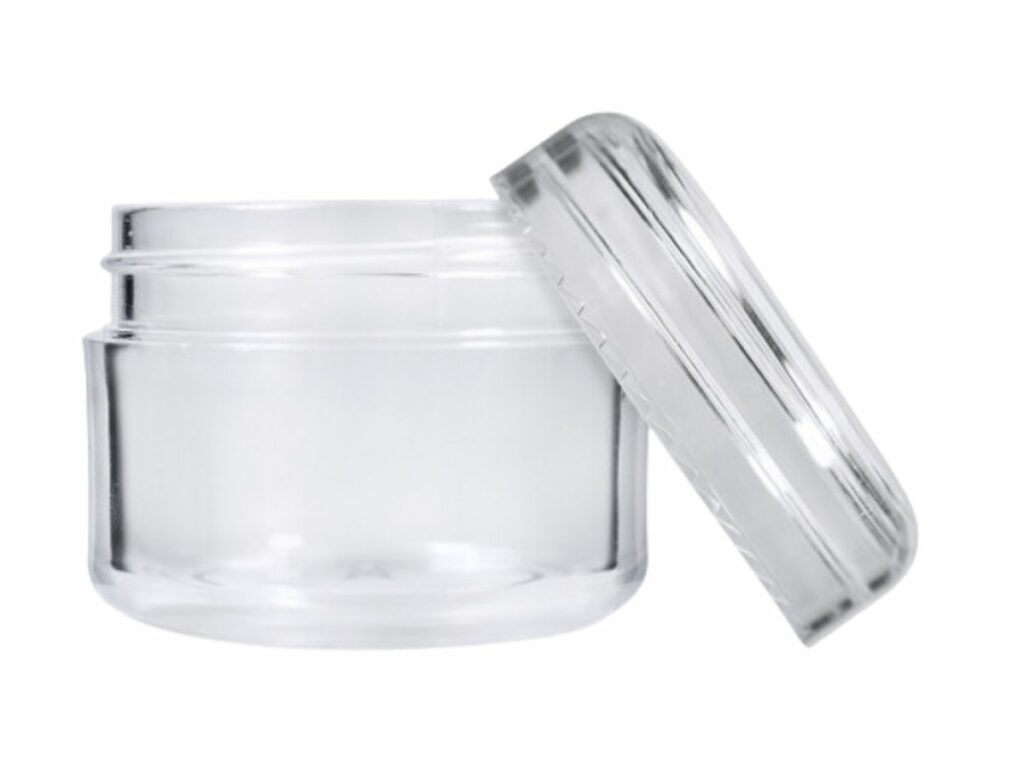
Bottles
Bottles are versatile and used for a variety of liquid cosmetics, including lotions, serums, and foundations. They can be equipped with pumps, droppers, or spray nozzles for convenient dispensing. Glass and plastic bottles are both widely used, with glass being preferred for higher-end products. TY Cosmetics uses elegant glass bottles for its premium serum line, emphasizing the product’s quality.
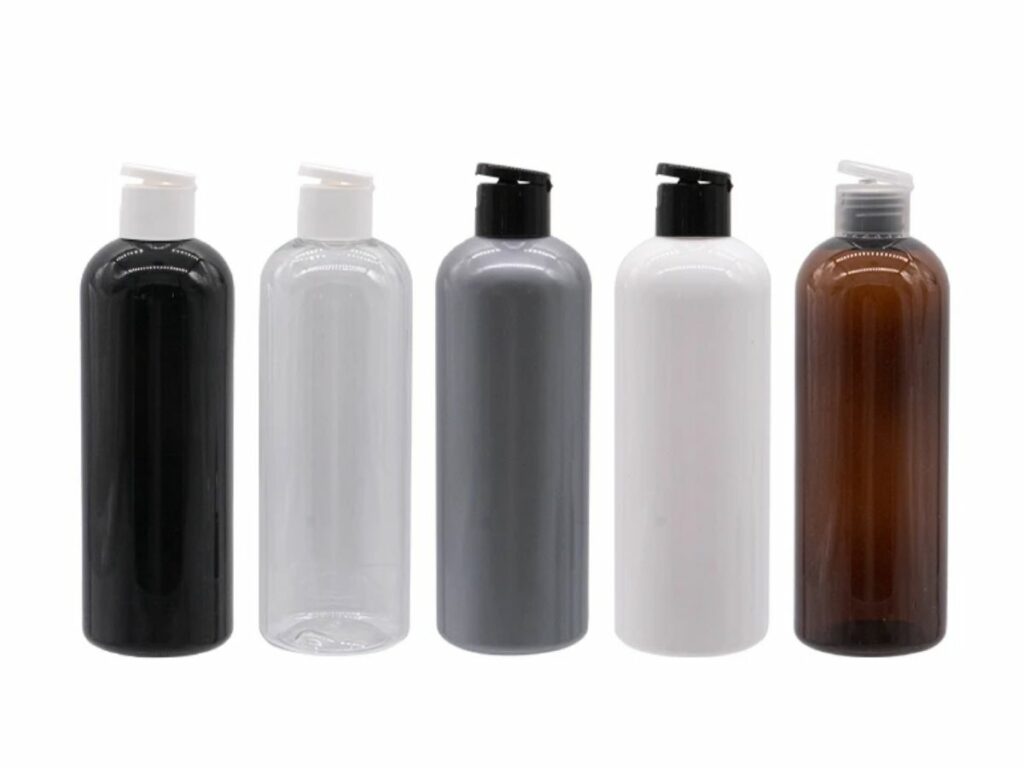
Compacts
Compacts are essential for solid or pressed powder cosmetics, such as blushes, bronzers, and eyeshadows. They are typically made of plastic or metal and often come with a mirror and applicator for convenience. A friend of mine has a beauty care line and I see that compacts are designed to be durable and portable, making them a staple in makeup bags.
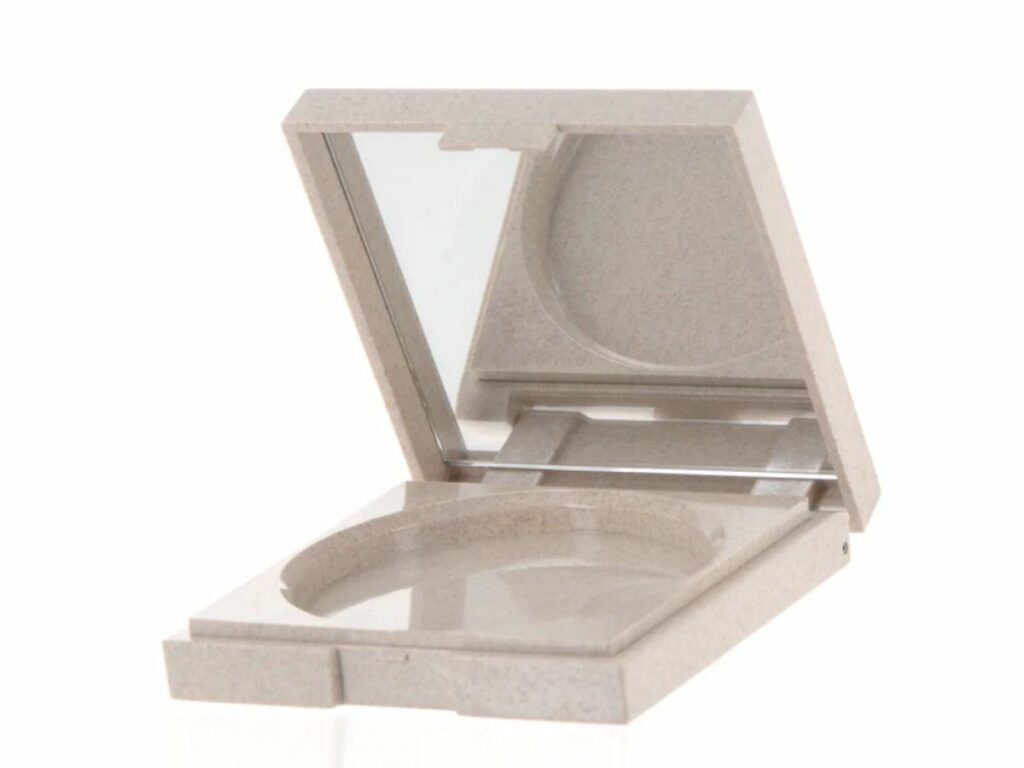
Pouches
Pouches are an emerging trend in cosmetic packaging, especially for sample or travel-sized products. They are lightweight, flexible, and use less material than traditional packaging, making them a more sustainable option. Pouches are ideal for single-use or small quantity products and are increasingly being used by brands for product samples or travel kits.
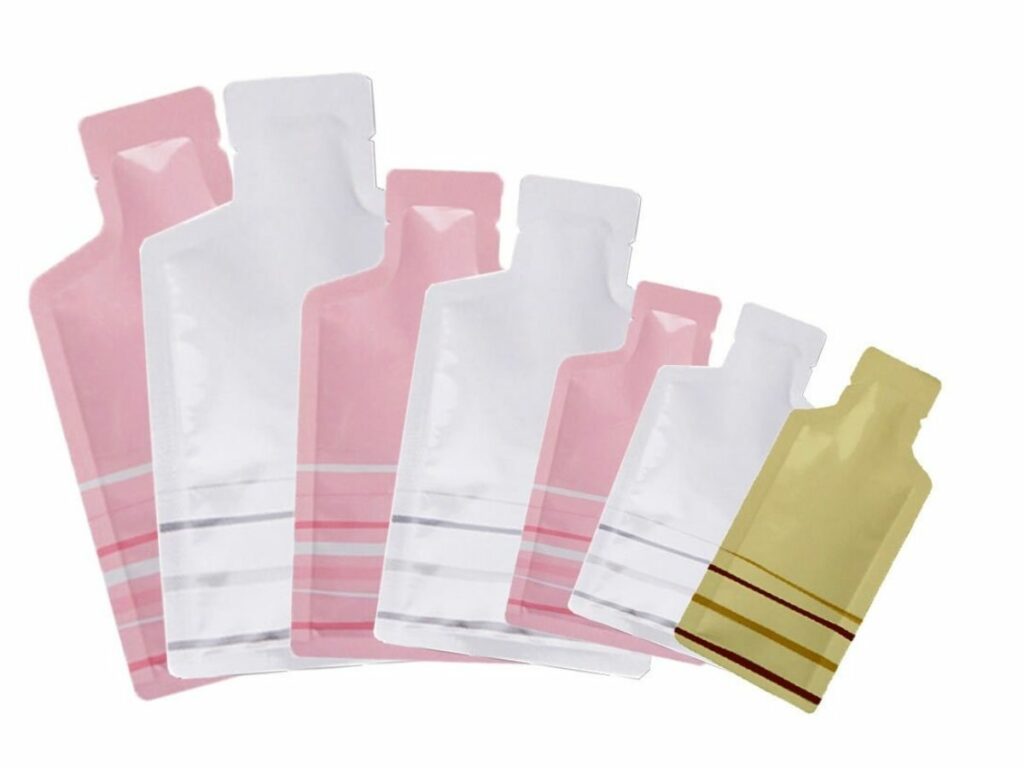
3. Different Materials Used in Cosmetic Packaging
In the dynamic world of cosmetics, packaging plays an essential role in brand identity and sustainability. Here are the various materials commonly employed in cosmetic packaging:
- Glass: Glass packaging releases an air of luxury and purity, often used for high-end skincare and fragrance products. It’s infinitely recyclable, maintaining quality without degradation. However, its weight adds to transportation costs and carbon footprints, and its fragility demands careful handling.
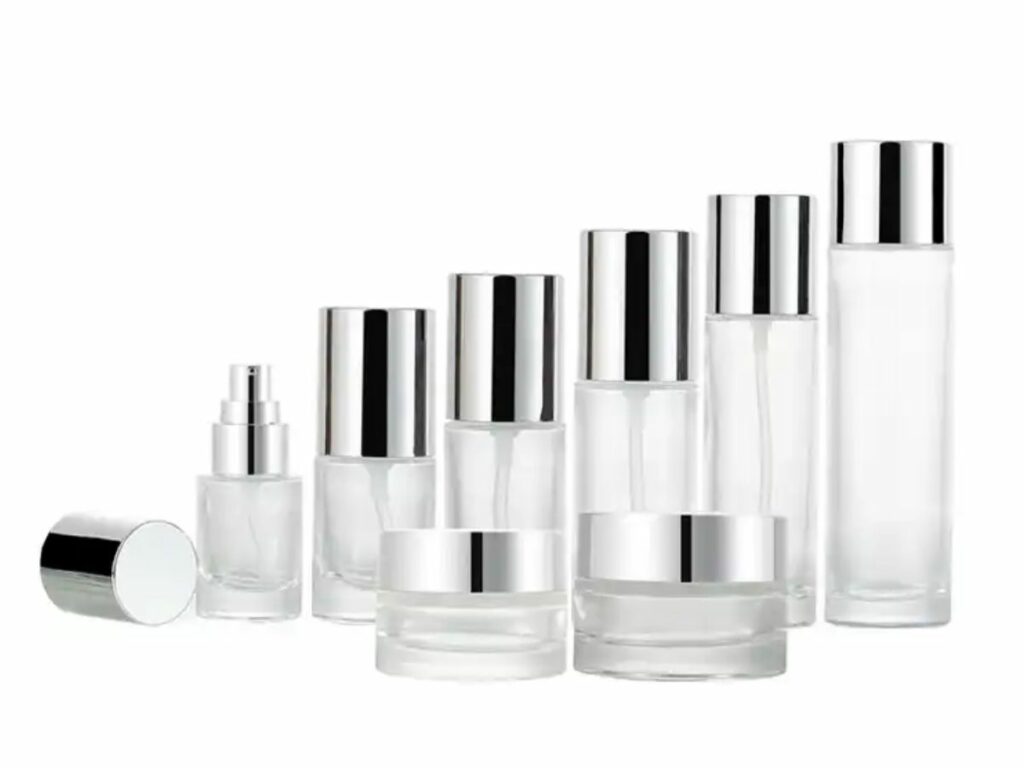
- Plastics: This is I believe the most widespread material in cosmetic packaging. Plastics are versatile, lightweight, and cost-effective. Recent innovations include bioplastics and post-consumer recycled plastics, reducing environmental impact.
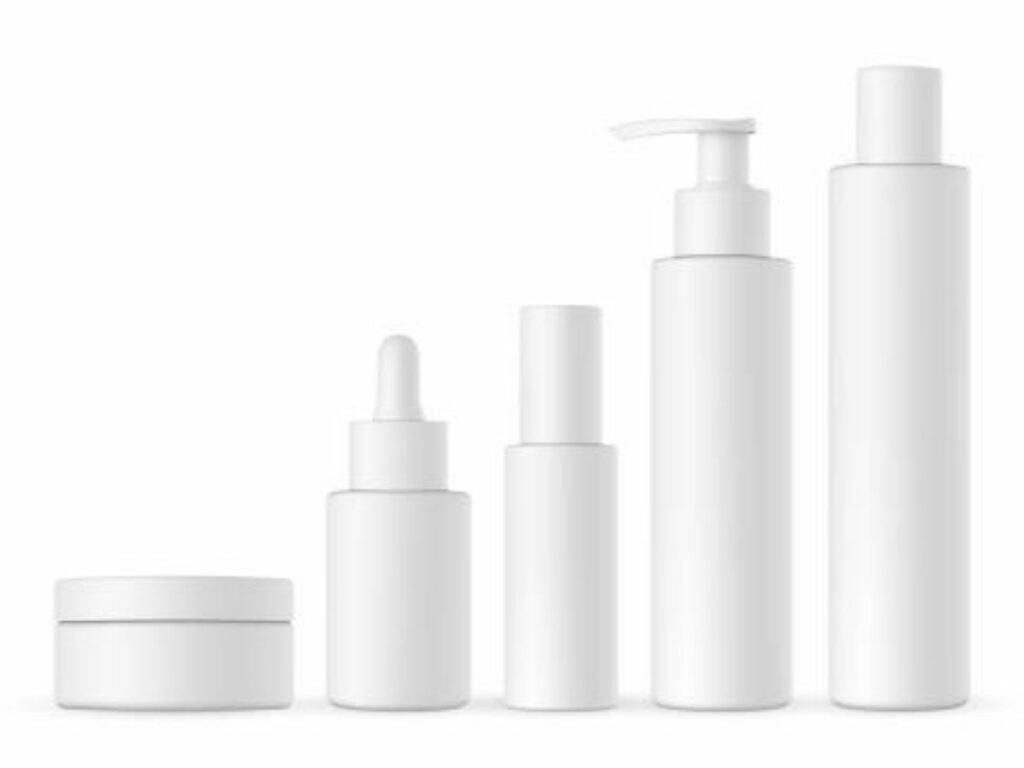
- Metal: Metals like aluminum and tin are increasingly popular for their sleek, modern look and excellent recyclability. They are especially favored in lipstick tubes, tins for balms, and aerosol containers. Metals offer durability but can be more costly and limited in design versatility compared to plastics.
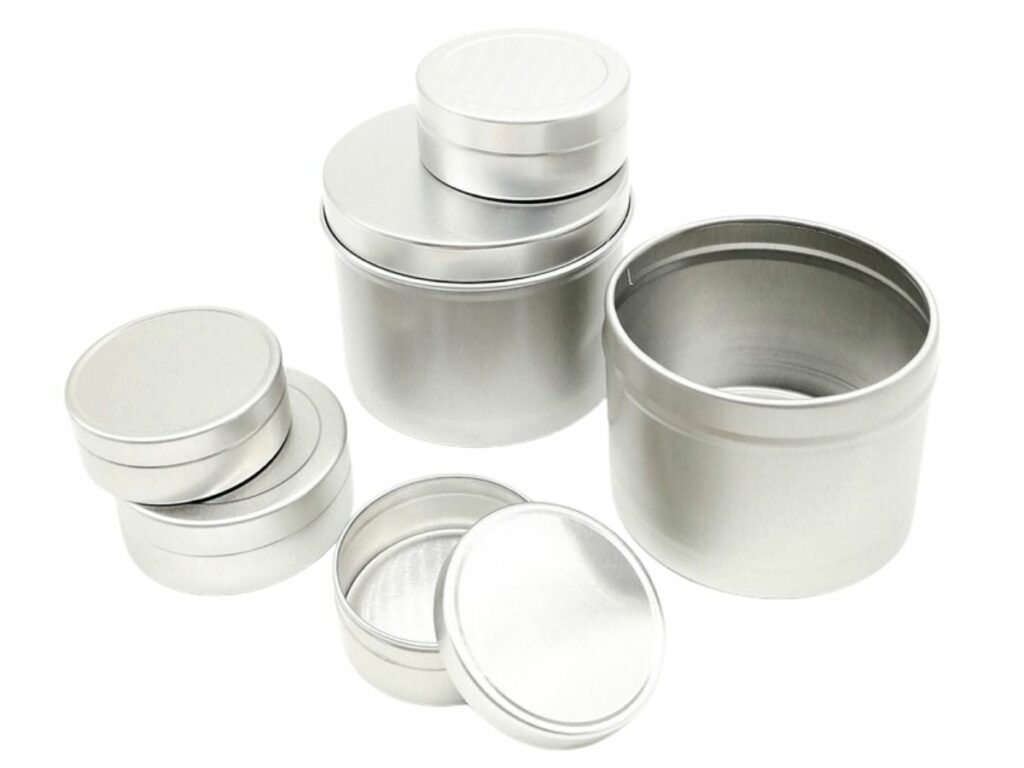
- Paper and Cardboard: Paper-based packaging solutions are surging in popularity due to their biodegradability and renewable nature. Ideal for boxes and cartons, they offer excellent opportunities for creative designs and are often used in combination with other materials for a unique unboxing experience.
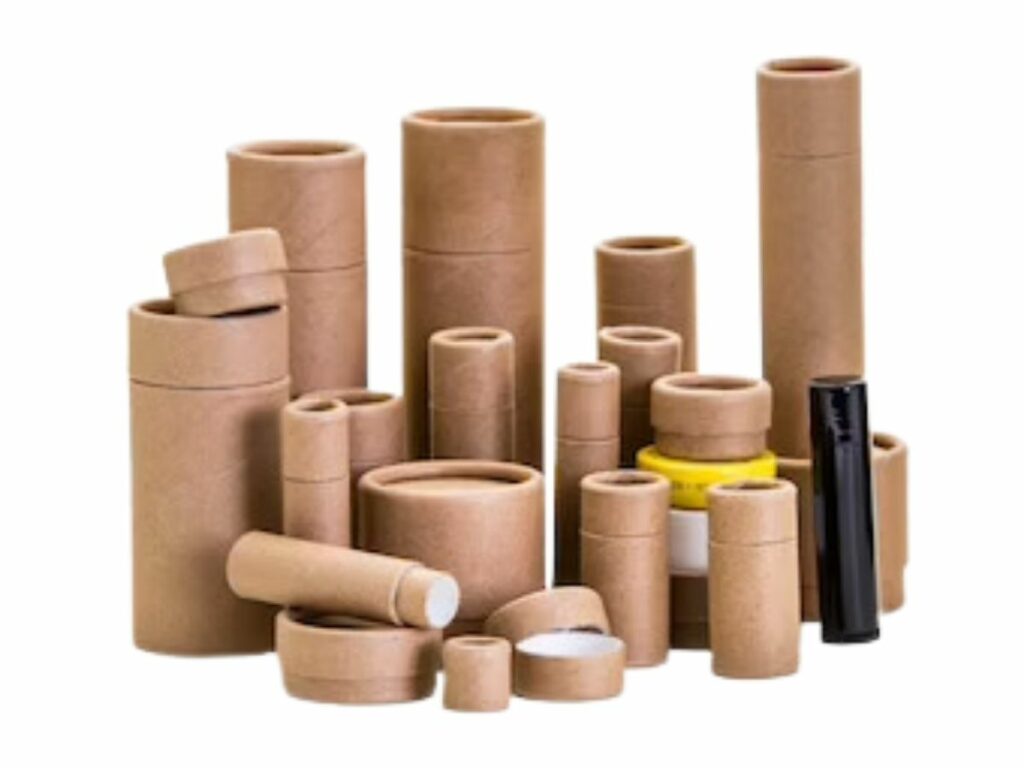
- Biodegradable Materials: Innovations in biodegradable materials, such as mushroom packaging or seaweed-based films, are emerging as futuristic, eco-friendly alternatives. These materials break down naturally, offering a promising solution to reduce cosmetic waste.
4. Design Elements to Consider
Design in cosmetic packaging is not just about aesthetics; it’s a strategic tool that can influence perception and brand loyalty. Here are key design elements to consider when creating packaging for cosmetic products.
Functionality and User Experience
The functionality of cosmetic packaging is essential. It should be user-friendly, making the application of the product effortless and enjoyable. For instance, a well-designed pump on a lotion bottle can control the amount dispensed, reducing waste and improving the user experience. TY Cosmetic’s recent compact foundation case features a magnetic closure, enhancing both functionality and the user’s sensory experience.
Visual Appeal and Brand Identity
Visual elements like color, typography, and imagery are integral in conveying the brand’s identity and values. The right combination can create an emotional connection with the consumer, making the product memorable and recognizable. I have seen conservative designs with clean lines and neutral colors that appeal to a brand promoting natural and organic products, conveying simplicity and purity.
Sustainability and Environmental Impact
Incorporating sustainable design elements can significantly enhance brand image and appeal to eco-conscious consumers. This can include using recyclable materials, reducing packaging layers, or opting for refillable options. A skincare line, like those supported by cosmetics manufacturers in the USA that introduced biodegradable paper packaging for its entire range, significantly reducing its carbon footprint and resonating with environmentally aware customers.
5. Technological Advancements in Cosmetic Packaging
The cosmetic packaging industry is rapidly evolving and is driven by technological innovations. Here are key advancements that are shaping the future of cosmetic packaging.
- Smart Packaging Technologies: Integration of smart technologies, like QR codes and NFC tags, is becoming more prevalent. TY Cosmetic offers enhanced customer engagement by providing additional product information, authenticity verification, and interactive experiences.
- 3D Printing for Customization: 3D printing technology allows for unparalleled customization in packaging design. Brands can create unique shapes and structures, offering a distinctive unboxing experience. This technology also enables rapid prototyping, speeding up the design process, etc.
- Automation in Manufacturing: Advanced automation and robotics in manufacturing lines have increased efficiency and consistency in packaging production. Equipment like high-speed filling machines and automated assembly lines ensure faster production times and reduce manual errors.
- Injection molding: As an expert, there’s a growing emphasis on reducing the environmental impact of packaging production. Technologies that enable more efficient use of materials, such as injection molding are employed to minimize waste.
- Advanced Barrier Technologies: Innovations in barrier technologies are crucial for cosmetic packaging, especially for products sensitive to air and light. Advanced materials and coatings are being developed to enhance product shelf life and maintain ingredient integrity, without compromising on recyclability.
6. Current Trends in Cosmetic Packaging
The cosmetic packaging landscape is continuously evolving, with new trends emerging that reflect changes in consumer preferences and societal values. Here’s a closer look at some of the most influential trends currently:
Minimalistic Design
Minimalistic design in cosmetic packaging is gaining traction for its clean, simple aesthetic that appeals to modern consumers. This trend focuses on using fewer elements, like basic shapes and limited color palettes, to create an elegant and understated look. Brands are adopting minimalism to convey transparency and honesty, as this design approach often aligns with a no-nonsense approach to ingredients and formulations.
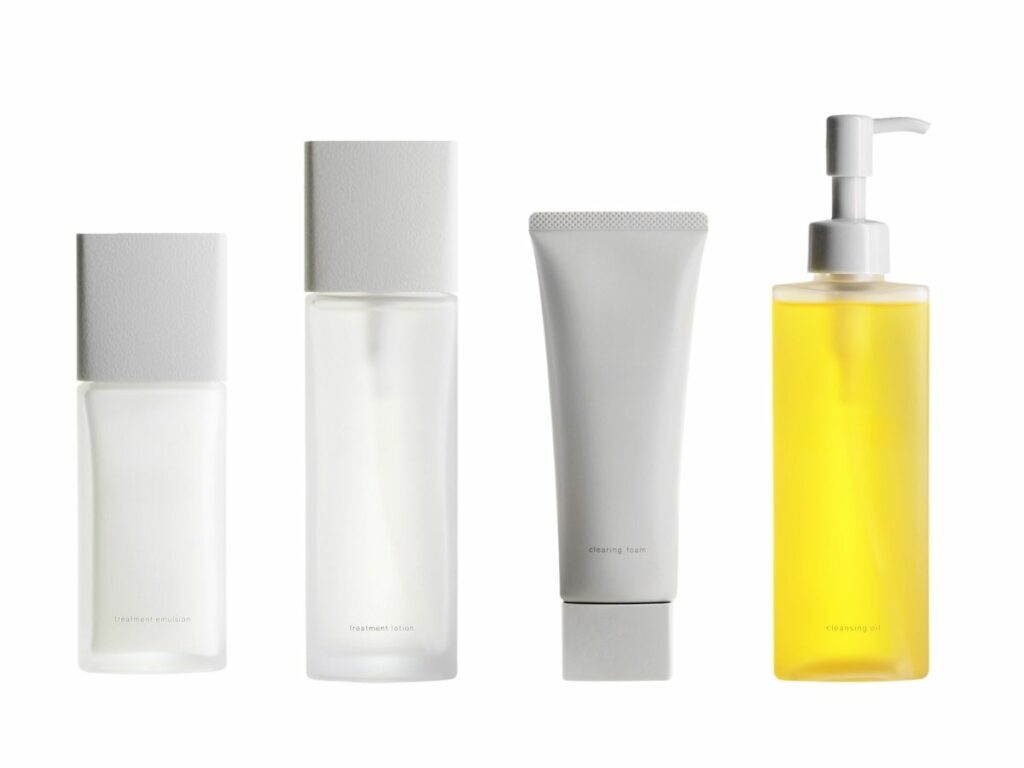
Bold Colors
In contrast to minimalism, bold and vibrant colors are also making a significant impact. This trend involves using striking, eye-catching hues to create standout packaging that demands attention on the shelves. Bold colors can bring forth emotions and create brand recognition. They’re often used to target wider demographics or to convey a sense of fun and energy in a product line.
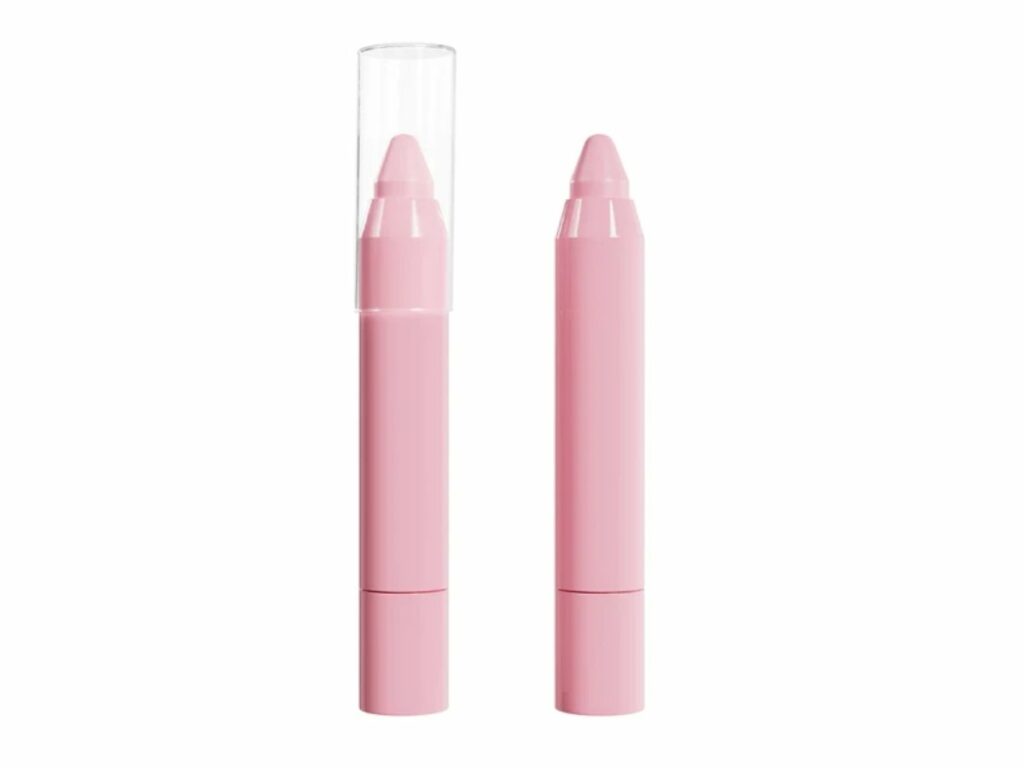
Sustainability Design
Sustainability is a driving force in packaging design, with an increasing number of brands prioritizing eco-friendly materials and processes. This trend involves using recyclable or biodegradable materials, reducing packaging size and complexity, and incorporating refillable options. Sustainable packaging not only reflects a brand’s commitment to the environment but also aligns with clients who are environmentally conscious.
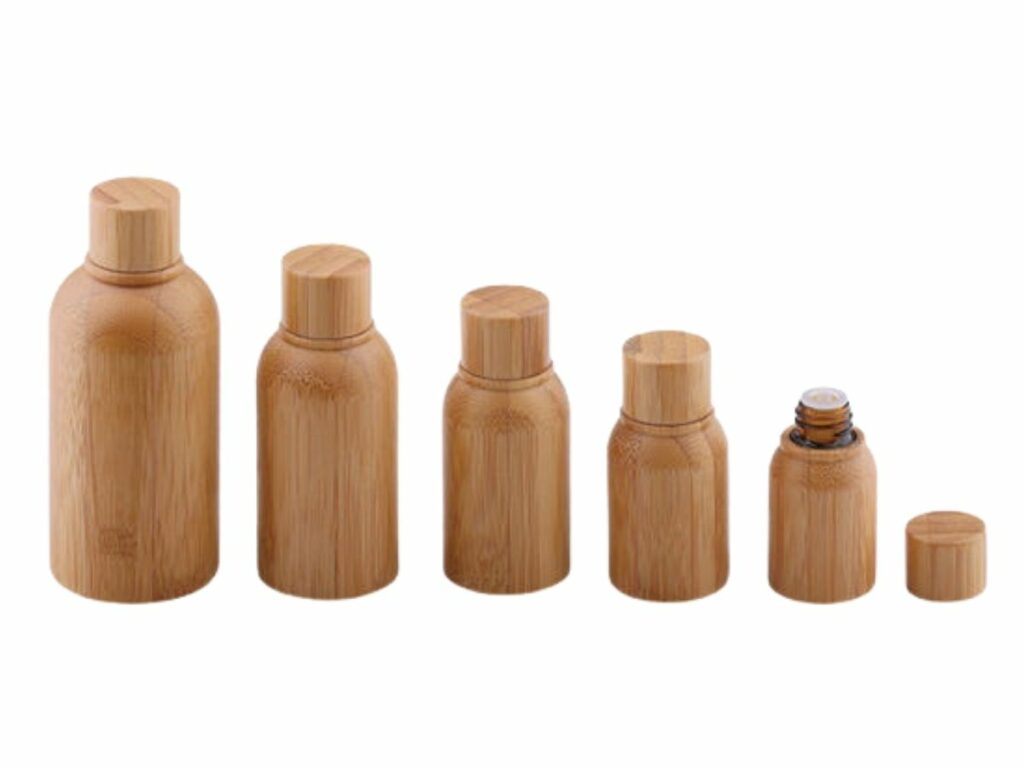
Millennial Designs
Millennial-focused designs cater specifically to the tastes and values of this demographic. This trend often incorporates modern typography, quirky elements, and a playful tone. Interactive elements, such as QR codes linking to digital content, are also popular. Packaging targeting millennials tends to be Instagram-worthy, considering the social media habits of this group.
Fine Art and Abstraction
Incorporating elements of fine art and abstraction is a trend that gives packaging a unique and sophisticated edge. This approach can include abstract graphics, artistic illustrations, and unconventional color combinations. It’s about turning the packaging into a piece of art, making the product not just a cosmetic item but also a statement piece.
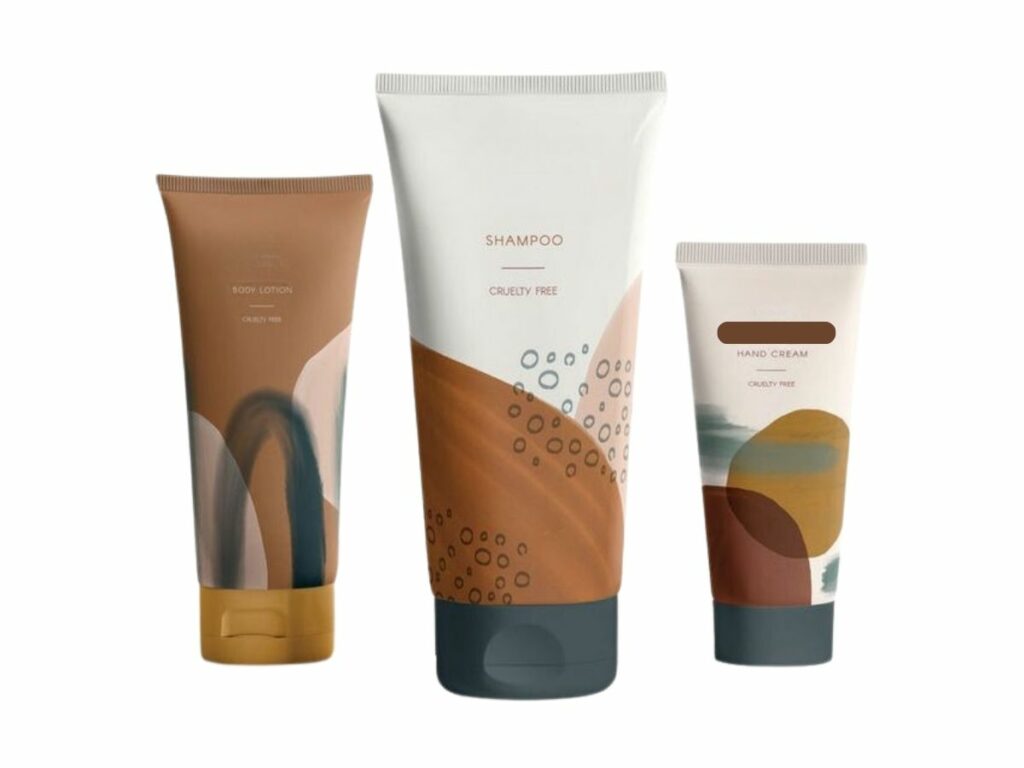
A Connected Trend
The rise of digital technology has led to a ‘connected’ packaging trend. This involves integrating digital elements, such as augmented reality, interactive labels, and scannable codes, into the packaging. These features can enhance customer engagement by offering additional information, interactive experiences, or even virtual try-ons.
7. 4 Tips for Choosing the Right Cosmetic Packaging
According to Precedence Research, the global cosmetic packaging market size was estimated at USD 33.08 billion in 2022 and is projected to surpass around USD 54.14 billion by 2032. See the following tips below:
#1 Target Audience
Understanding your target audience is crucial in choosing the right packaging. Your packaging should appeal to the preferences, values, and needs of your client base. For instance, if your products are aimed at eco-conscious consumers, opting for sustainable and biodegradable packaging materials would be more appealing. Similarly, packaging designs for millennials might incorporate modern, vibrant designs.
#2 Product Compatibility
It’s essential to ensure that the packaging material is compatible with the cosmetic product. Different products have different requirements in terms of protection from air, light, and contamination. For example, certain skincare products might require airless pump bottles to maintain their efficacy, while fragrances might need glass bottles to preserve their aromatic qualities.
| Product Type | Packaging Material | Key Considerations | Example Packaging |
| Creams and Lotions | Plastic, Glass | Barrier properties, ease of dispensing, resistance to corrosion | Jars, Squeeze Tubes |
| Serums and Oils | Glass, PET Plastic | UV protection, dropper or pump for precise application | Dropper Bottles, Vials |
| Powders (Loose/Tight) | Plastic, Metal | Airtight, moisture-resistant, includes sifter for loose powders | Compacts, Sifter Jars |
| Liquid Foundations | Glass, Plastic | Pump or dropper for hygienic dispensing, opacity for light sensitivity | Pump Bottles, Tubes |
| Lipsticks and Balms | Plastic, Metal | Twist-up mechanism, airtight, durability | Lipstick Tubes, Tins |
| Gels and Scrubs | Plastic, Glass | Easy squeeze or scoop, durable, moisture-resistant | Tubes, Wide-mouth Jars |
| Aerosols (Sprays) | Aluminum, Steel | Pressure-resistant, nozzle functionality | Aerosol Cans |
| Perfumes | Glass | Non-reactive, elegant design, spray or roll-on applicator | Spray Bottles, Roll-ons |
#3 Brand Image and Values
Your packaging should reflect your brand’s image and core values. It’s an extension of your brand identity and plays a significant role in how consumers perceive your products. If your brand stands for luxury and elegance, your packaging should mirror that with high-quality materials and sophisticated design. If your brand is more about playfulness and creativity, bright colors and unique designs might be more appropriate.
#4 Functionality and Convenience
The functionality of the packaging is as important as its design. Consider how easy it is to use, carry, and store. Packaging should be user-friendly, providing convenience and efficiency in application. A travel-sized, leak-proof container would be ideal for products meant for on-the-go use. The packaging should also be designed to dispense the product effectively, minimizing waste and ensuring a pleasant user experience.
Conclusion
Journeying the dynamic realm of cosmetic packaging becomes clearer with the insights and trends outlined in this guide. It’s designed to empower brands with the knowledge needed to make informed choices, enhancing both product appeal and client engagement.
TY Cosmetic offers innovative and sustainable packaging solutions. Discover more about our services and how we can help transform your packaging vision into reality. For further information, feel free to contact us.
